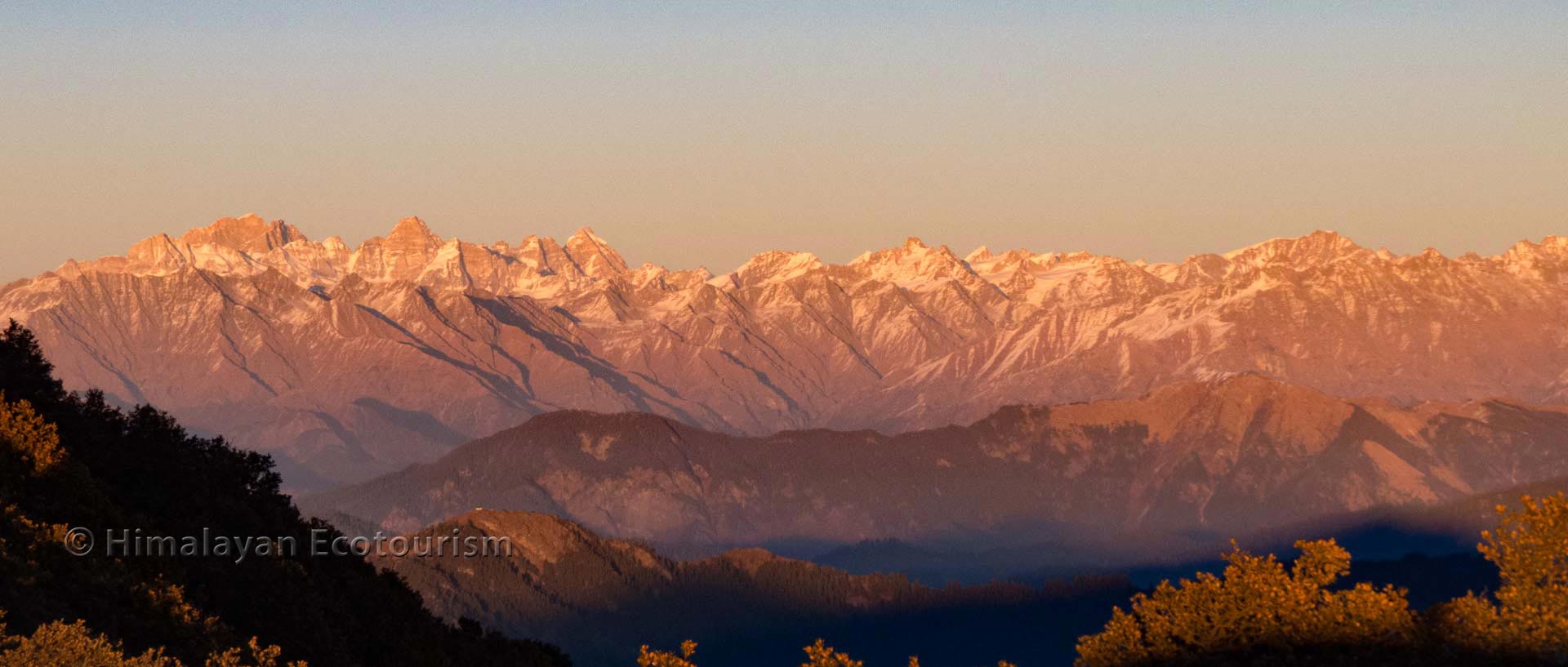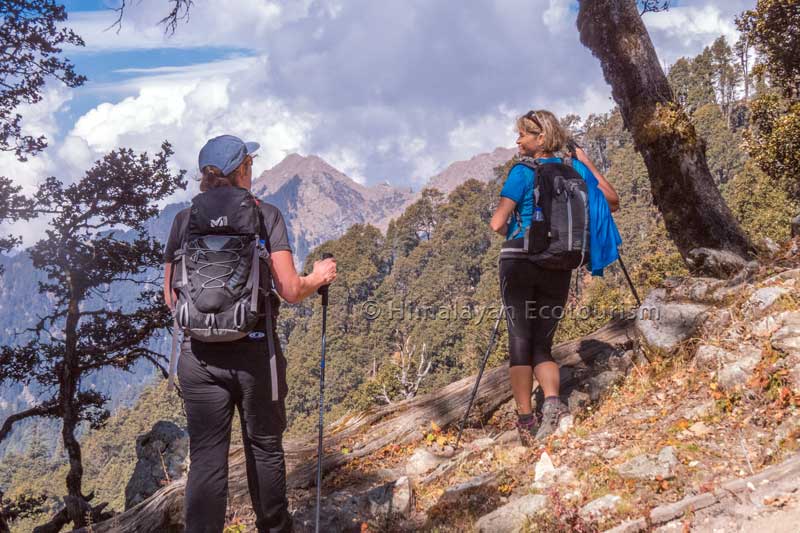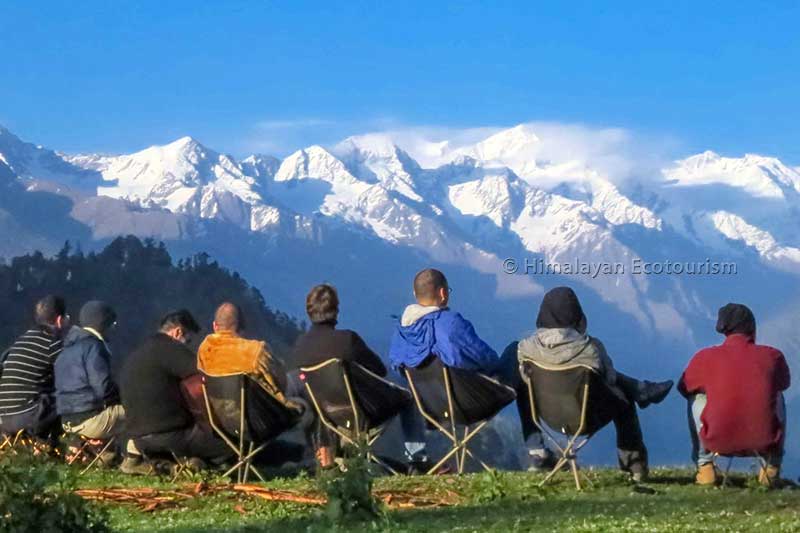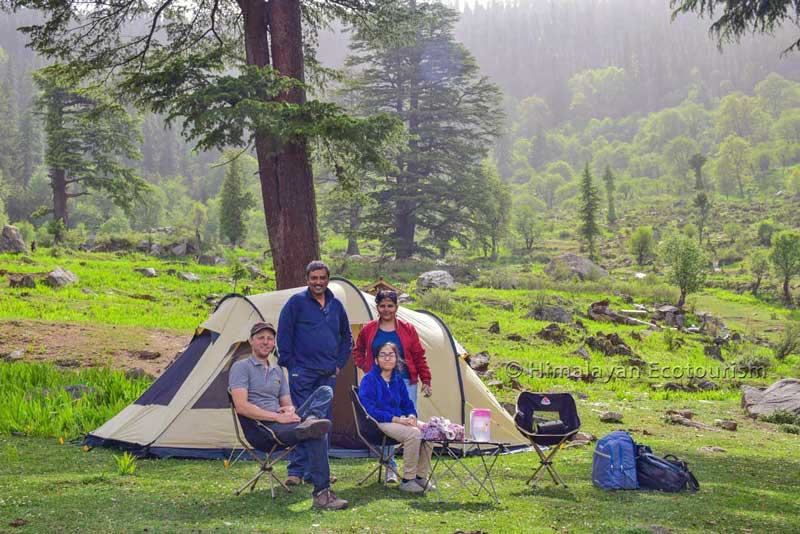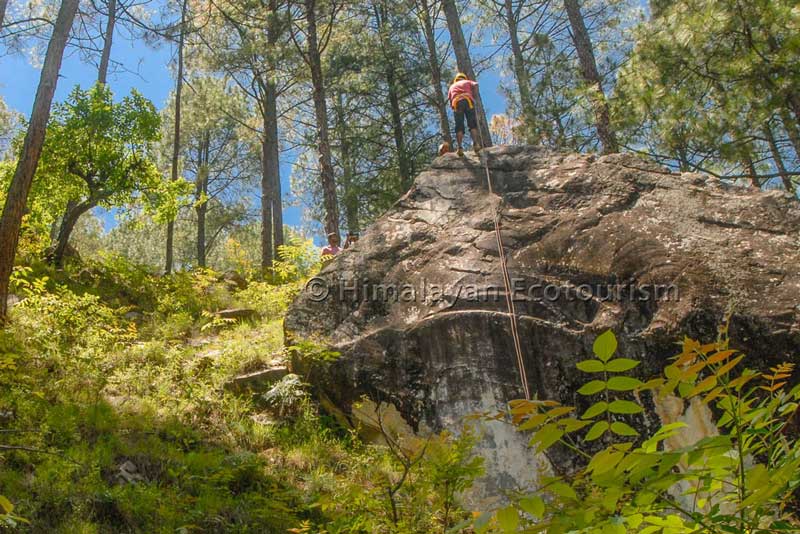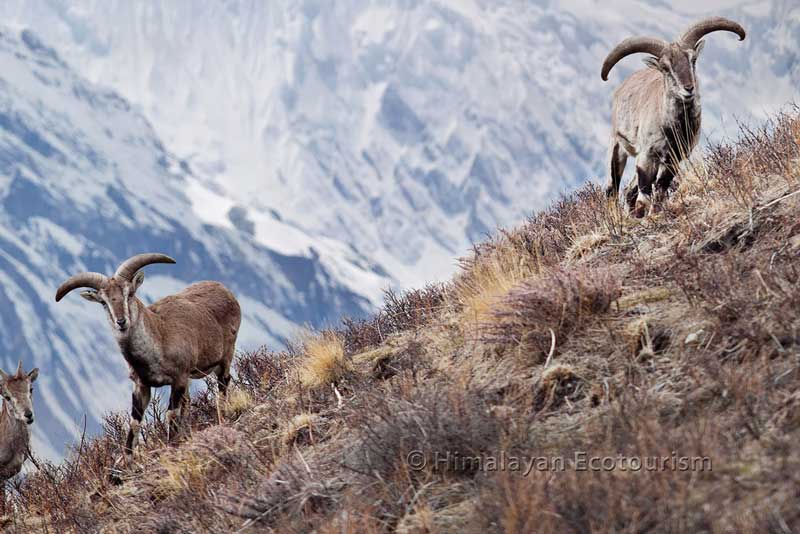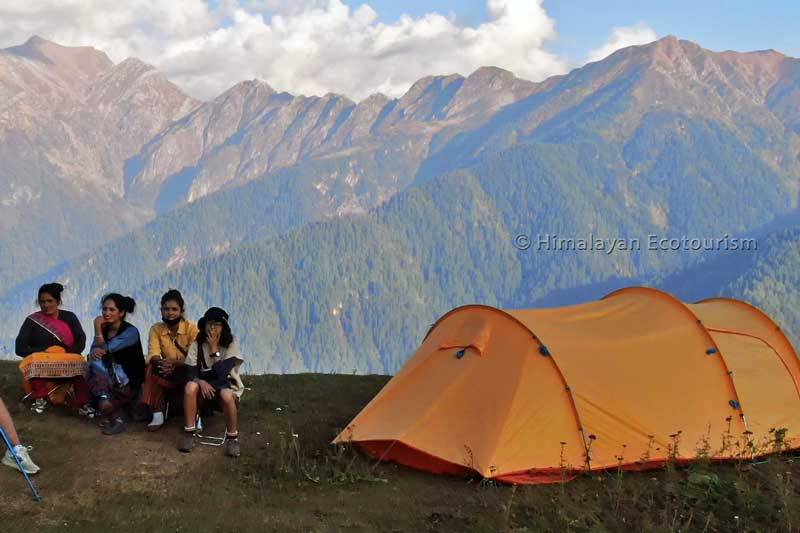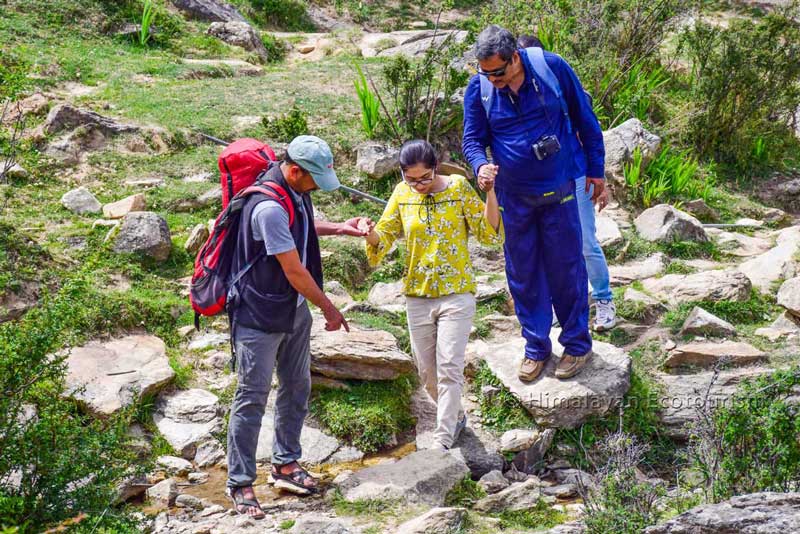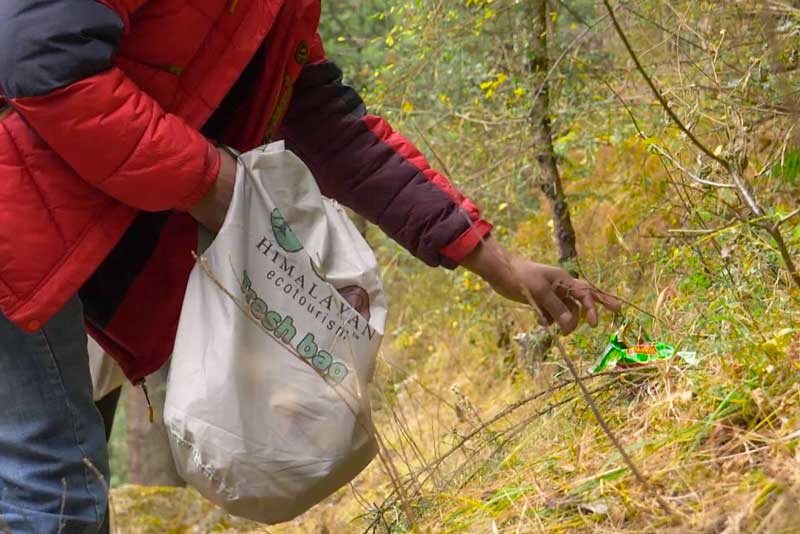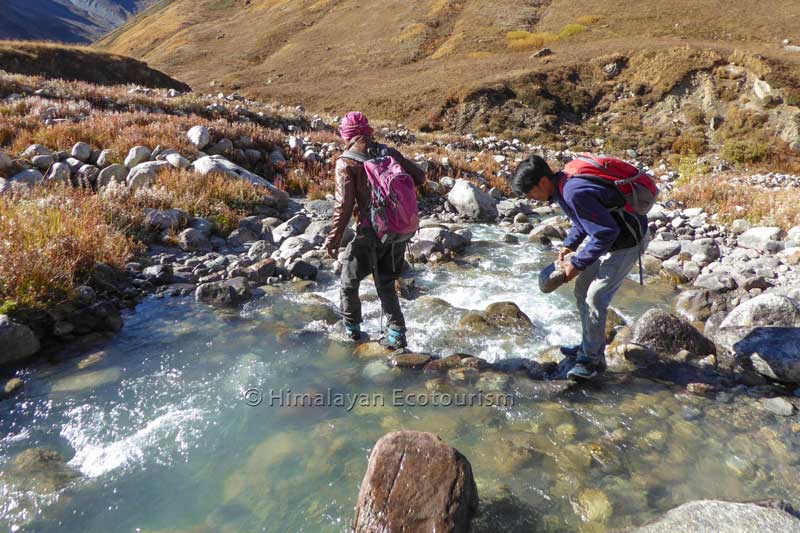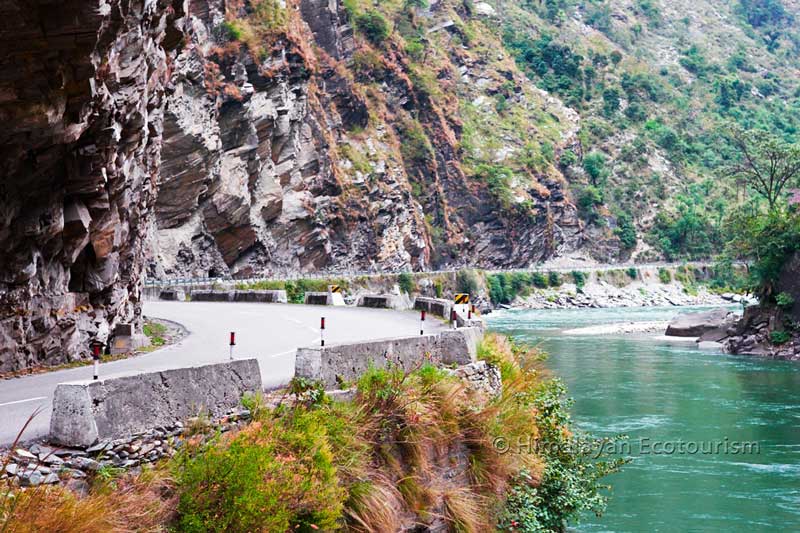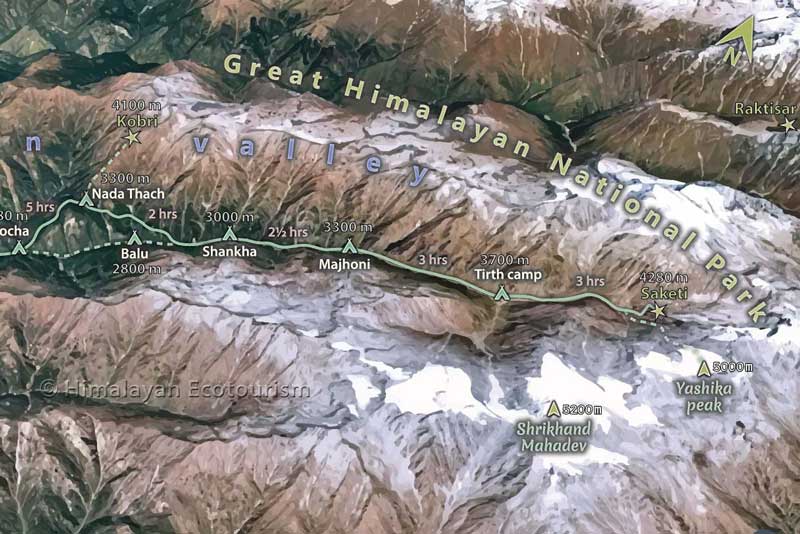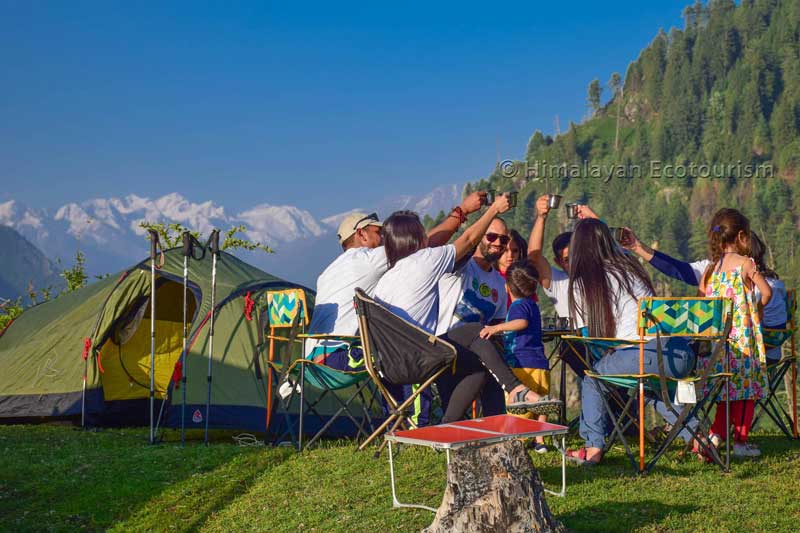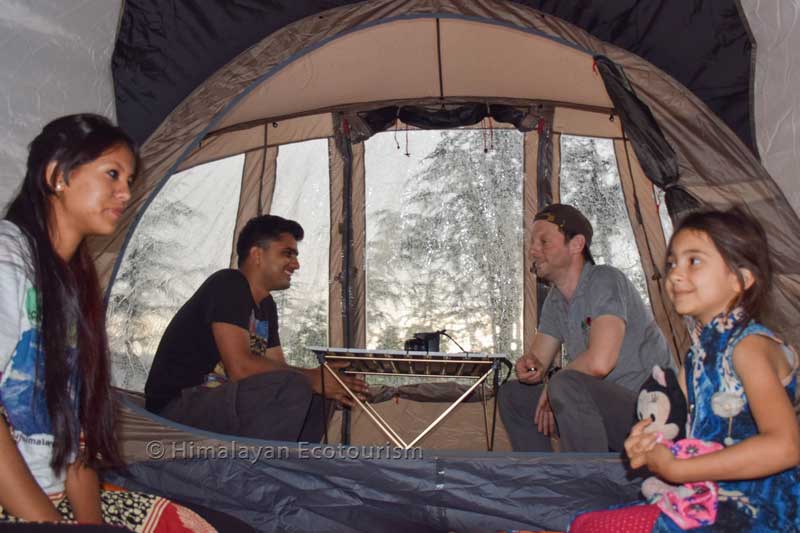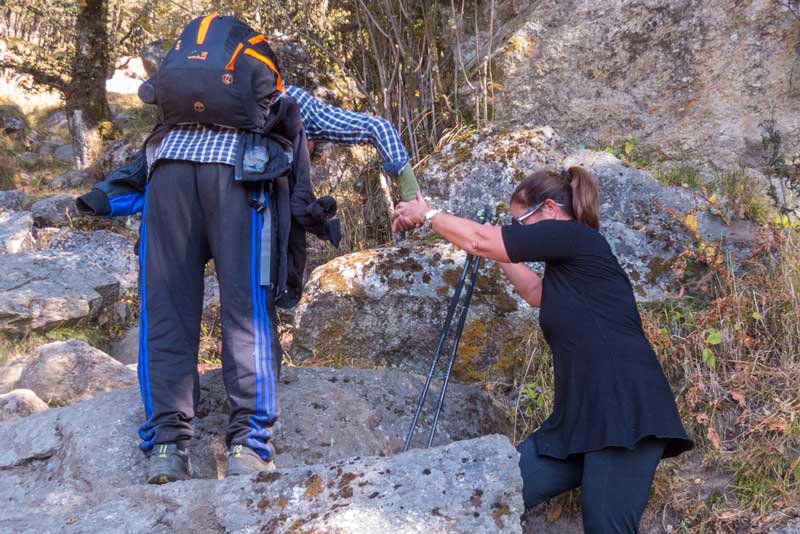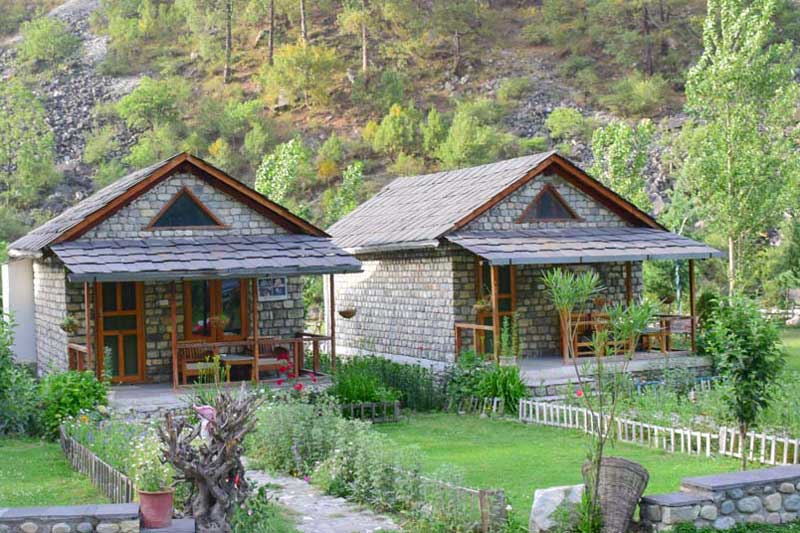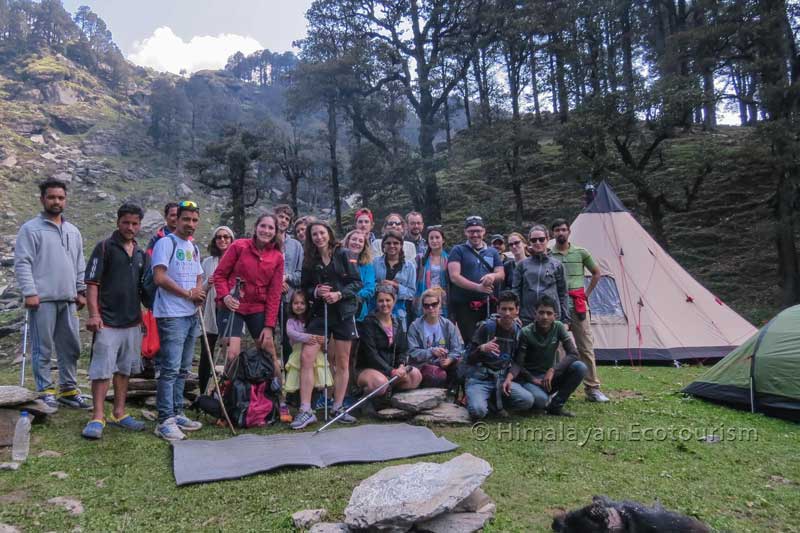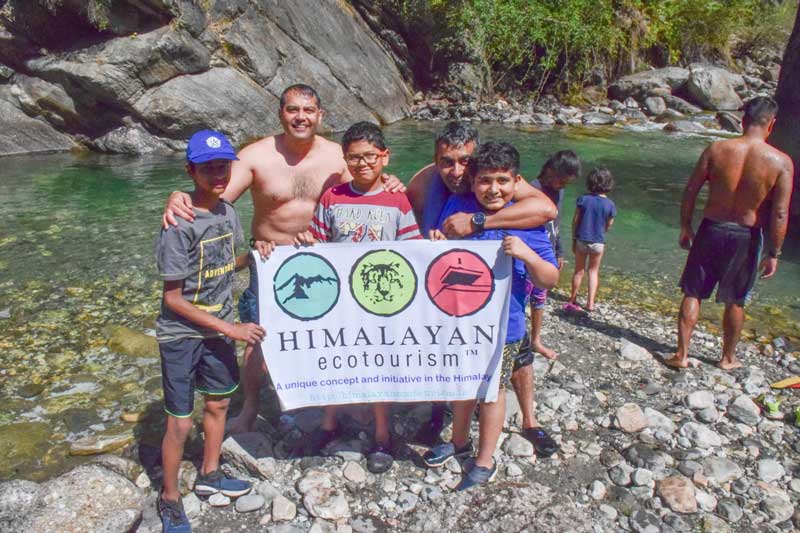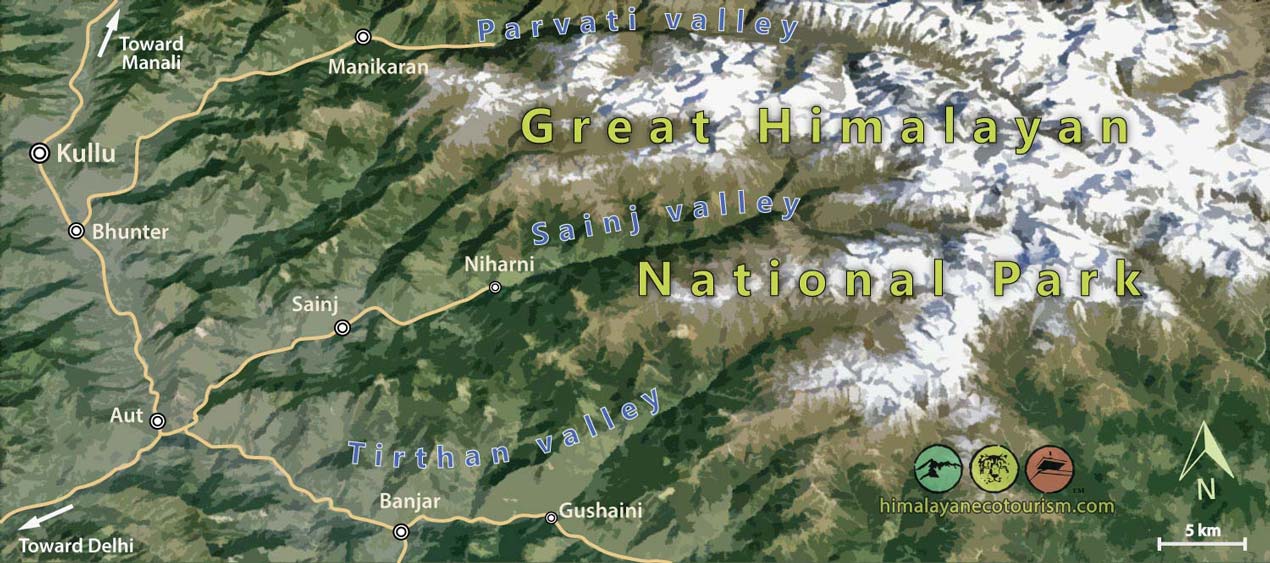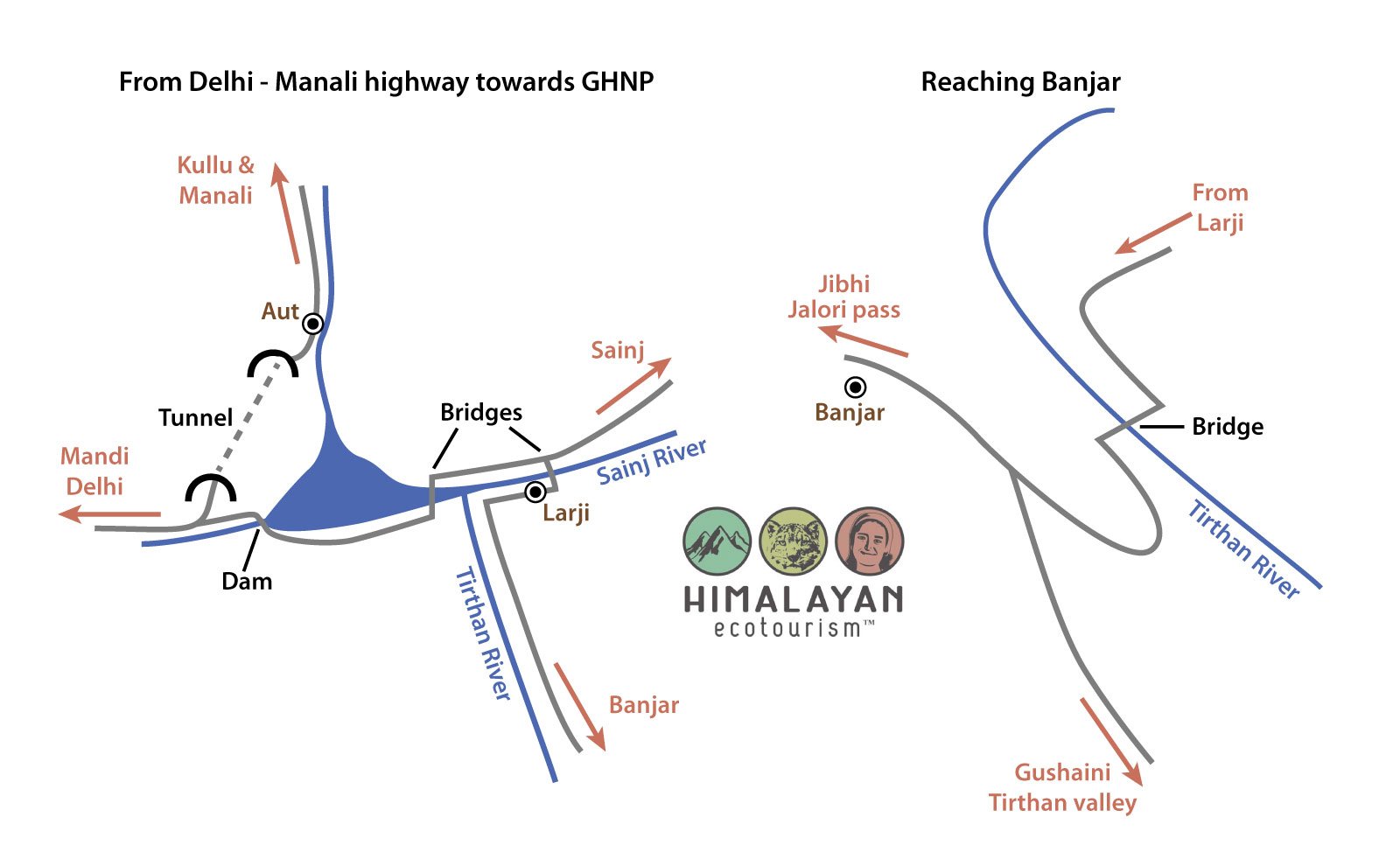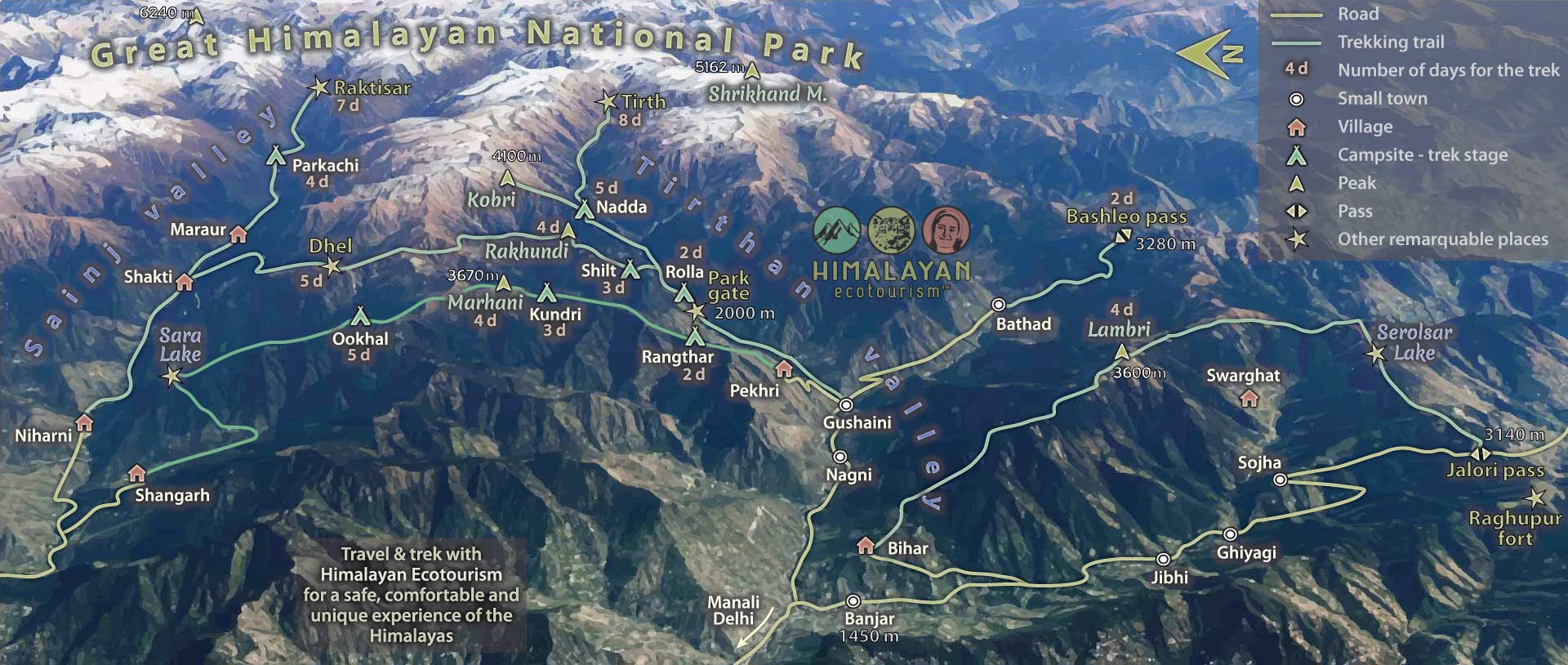Great Himalayan National Park GHNP
Things to do in the Great Himalayan National Park
Multi-day treks
Meet the mighty Himalayas and explore GHNP’s wilderness on our 2- to 10-day treks.
Day hikes
Enjoy the Himalayan nature and quaint villages in one day with one of our day hikes.
Fixed dates departure
Join one of our group treks with fixed date departures to the GHNP.
Easy camping in the wild
Try our camping experience in the wilderness for a relaxed outdoors experience.
Adventure activities
Get your adrenaline pumping with our fun activities for adventure lovers, safely of course..
Wildlife treks
Discover the wildlife of Western Himalayas with customised wildlife treks in the GHNP.
Women trek
Join our women-only treks led by our women staff for camaraderie and adventure in the wild Himalayas.
Nature therapy
Heal in nature with our forest bathing experience that is accessible to all, including people with disabilities.
Travel responsibly
Support sustainable development in the Himalayas by trekking with us.
A practical guide to the Great Himalayan National Park
About your trek
Find out everything you need to know before going on a trek with us to the GHNP.
How to reach GHNP ?
Know about the best ways to reach Great Himalayan National Park for your trek.
Maps of the GHNP
Get a quick visual insight of GHNP with trek maps, road maps, and more.
Best time to go
Discover the best time to visit and trek in GHNP for the best experience.
Your trekking equipment
Select your equipment for your trek for a comfortable trekking experience.
Our services
Learn more about the services we offer before, during, and after your trek.
Homestay
Choose a homestay to meet local people and experience the culture around GHNP.
Corporate events
Offer your team a rejuvenating time in the Himalayas by organising an event with us.
Why to choose us ?
Support sustainable development by trekking and travelling with a social enterprise.
About the Great Himalayan National Park
The Great Himalayan National Park is located in the Western Himalayas, close to Kullu and Manali in Himachal Pradesh. GHNP is part of the Great Himalayan National Park Conservation Area (GHNPCA) and a UNESCO World Heritage Site.
The region is of great interest to conservationists and naturalists because of its value as a biodiversity hotspot and for the rare, endemic, and endangered birds and animals found in the Great Himalayan National Park.
GHNP offers an exciting and memorable experience for trekkers, hikers, campers, and bird/wildlife enthusiasts with stunning vistas of the lush Himalayan mountains and some of the best Himalayan treks. Visitors also have the opportunity to witness local traditions, culture, and life in the Himalayan villages in the Ecozone.
Trekking is the only way to enjoy and explore the Great Himalayan National Park. There are several trekking and hiking routes in the Great Himalayan National Park. A short 2 day trek is a gentle introduction to the park. Longer treks of upto 9 days take you deep into the heart of the park to the source of rivers.
Himalayan Ecotourism takes you for amazing treks in the Great Himalayan National Park (GHNP). Your trekking crew are members of the local cooperative that we have encouraged and supported from its creation. Your visit actually supports conservation of the Great Himalayan National Park.
Since its inception in April 2014, Himalayan Ecotourism has been operating towards the preservation of the Himalayan ecosystem by engaging the local community in managing their invaluable resources.
For non-trekkers who want to enjoy the experience of camping in the Himalayas we also offer “Night under the stars” in the ecozone of the GHNP.
For adventure seekers we offer activities like rappelling, river crossing, rock climbing and fishing!
Himalayan Ecotourism also organizes exploration tours around the Great Himalayan National Park specially designed for birdwatchers and for people interested in the rich traditions and culture of the Himalayas.
Great Himalayan National Park’s Ecozone
The creation of GHNPCA also saw the creation of the Ecozone, which acts as a buffer zone between the Park and the rest of the region. It is a designated area of 5km radius around the Park where the villages are located.
The majority of inhabitants of the Ecozone are agriculturalists. They are almost self-sufficient for their own subsistence. They grow wheat, corn, rajma, and many vegetables and spices. They also grow fruits that are sold to larger markets in India. The region is known for its apples and apricots.
Many of the villagers have large herds of sheep and goats, which are used for wool and meat. Goats are often offered to the local Devatas (gods) on special occasions.
Since the creation of GHNP, the local community’s access to the Park has been prohibited. The Park used to be an important source of livelihood for local communities where they collected medicinal plants and wood and grazed their cattle. Hence, the creation of the Park resulted in an important loss of income for the local community, which is being addressed through various initiatives.
Efforts are underway to protect the local culture and traditional livelihood with emphasis on the development of the villages. The local communities are also encouraged to participate actively in the conservation and protection of the Park.
Himalayan Ecotourism is facilitating the creation and implementation of alternative sources of income to secure the welfare of the locals while also protecting the Park.
We work closely with the local communities to economically empower them through sustainable development models such as the cooperative that operates the treks in the Himalayas, camping, and adventure activities in the Great Himalayan National Park.
Read more about our work here.
Great Himalayan National Park Videos
TREKKING IN THE GHNP
All you need to know for planning your trek in the GHNP with us
TREK IN GHNP BY JANISHA
A moving video narrated by Janisha among our cooperative members.
WOMEN TREK TO THE GHNP
Our women empowerment program on trek !
Great Himalayan National Park conservation area
The Great Himalayan National Park (GHNP) is a World Heritage Site (WHS).
The Ecozone is the buffer zone between the Park and the rest of the region. It comprises villages and lands within a 5km radius around the Park. Villages located in the Ecozone are supposed to be closely associated to the protection of the park. Their culture and traditional livelihood have to be protected and a special emphasis is normally given to the development of the villages.
The majority of inhabitants of the Ecozone are agriculturalists ; they are almost self-sufficient for their own subsistence. They grow wheat, corn, rajma, (organic beans) and many vegetables and spices. They also grow fruits that are sold to larger markets in India. The region is well known for its apples and apricots.
Many of the villagers have large herds of sheep and goats. Both are used for wool and for their meat. Goats are often offered to the local Devatas (gods) on special occasions and also served as one of all-time-favourite delicacies of the region.
Since the creation of the Great Himalayan National Park, local community’s access to the Park has been prohibited. The park used to be an important source of livelihood for local communities be it by collecting medicinal plants, wood, or grazing their cattle.
Hence creation of the Park resulted in an important loss of income for the local community. Himalayan Ecotourism social and environmental objectives aim at facilitating availability of alternative sources of income so that welfare of the locals and protection of the Park are ensured.
The GHNP and the Tirthan Valley Ecozone are a hub of biodiversity. It only takes a glance to spot exceptional species of birds. The more patient and experienced naturalists can see the rare and ‘difficult-to-spot’ mammals. Many are on the Red List of threatened species. The process of conservation of these species by the Park is essential to their survival.
A trekker must respect the environment he travels in. The main cause of extinction of animal and plant species is the destruction of the ecosystems. The GHNP and the Ecozone community are dedicated to protect and manage these exceptional natural environments.
Best time to visit Great Himalayan National Park
Best time to visit Great Himalayan National Park GHNP is April, May, June, and then October and November.
Avoid the monsoon between July and August as it rains a lot and the paths become slippery and there are chances of landslides.
Avoid the winter months of December to March. GHNP receives heavy snowfall in winter.
JAN
COLD
Avoid
FEB
COLD
Avoid
MAR
COLD
You may go
APR
TEMPERATE
Good to go
MAY
PLEASANT
Best time to go
JUN
PLEASANT
Best time to go
JUL
HUMID
You may go
AUG
HUMID
Avoid
SEP
PLEASANT
You may go
OCT
PLEASANT
Best time to go
NOV
TEMPERATE
Best time to go
DEC
COLD
You may go
How to reach Great Himalayan National Park
The ecozone of the Great Himalayan National Park is just 1 hour off the main Delhi-Kullu-Manali road. There are regular overnight Volvo buses from Delhi and Chandigarh to Kullu and Manali.
Inform the conductor of the bus that you need to be dropped at Aut town just after the tunnel. We can arrange a taxi to pick you up from Aut from where it is 1.5 hours to Gushaini – the main starting point for treks to the Great Himalayan National Park.
See next section for more information and maps for getting to GHNP.
Traveling to GHNP
A bus is the preferred option to travel from Delhi to GHNP via Aut.
There are comfortable Volvo buses (min Rs 1000) from Delhi to Manali. Most of the busses start in the evening from Delhi. You have to get off the bus at Aut early morning, and take a taxi (about Rs 1000) or local bus to Banjar or Sainj. Or we can arrange your transportation from Aut by sending our own taxi.
You can also come from Shimla going through Jalori pass (Shimla – Banjar, 8 hours drive). Be aware that Jalori pass is closed in winter because of snow (December to March).
If you come by your own vehicle, the shortest route goes through Chandigarh, Bilaspur, Mandi and Aut. Then you need to move to Banjar or Sainj, the two main entries to the Park (Delhi – Banjar, 12 hours). The road to GHNP diverts before reaching Aut. Just before Aut, there is a tunnel (the only tunnel on the road from Delhi).
Do not enter the tunnel.
Just at the entrance of the tunnel there is a smaller road on the right. Take this one. After crossing a dam and then a bridge, either you continue straight to Sainj (for Sainj valley), or if you need to go to Banjar (for Tirthan valley), you need to cross the next bridge on your right to reach the small town of Larji. Turn right after the bridge and continue straight to Banjar (about 20 km from Larji).
Flora and fauna in Great Himalayan National Park
Apart from the sublime beauty of the Himalayan mountain range that the Great Himalayan National Park is famous for, you will encounter an array of flora including medicinal plants such as henbane and purple Jerusalem sage while trekking in GHNP. The vegetation varies based on the altitude and includes forests with pine, deodar, oak, and horse chestnut trees as well as sprawling alpine meadows. The flora of GHNP also comprises rhododendrons, fungi, and shrubs.
The Great Himalayan National Park is home to over 31 species of mammals, 209 species of birds, and a variety of invertebrates, amphibians, and reptiles! This abundance of wildlife is because of the different ecosystems that fall within the protected area and that are located at different altitudes ranging from 1800m to above 6000m.
The mountains are home to the Himalayan Black Bear, the Himalayan Tahr, the Himalayan Brown Bear, and the Phantom of the Mountains—the Snow Leopard. Himachal Pradesh’s state bird Western Tragopan, or Jujurana, which is an elusive and endangered species, is found in these forests. There are other pheasants too such as the monal, koklass, white-crested kajeel, and cheer pheasant.
Birders have the opportunity to spot a variety of other birds of the Himalayas here, which includes the:
- Long-tailed Minivets,
- Yellow-bellied Fantails,
- Wallcreepers,
- White-collared and Gray-winged blackbirds,
- variegated laughing thrush,
- Scaly-breasted Wren Babbler,
- Spectacled Finch and Golden Bush Robin,
- Blue-capped Redstart,
- Black-throated Thrush,
- Black-throated Accentor,
- Little Forktail,
- Crested Kingfisher,
- Blue Whistling Thrush,
- Yellow-billed Magpie,
- Greyheaded and Black-crowned flycatcher-warblers,
- Bar-tailed Treecreeper,
- Lammergeiers,
- Himalayan Griffon Vultures
- Golden Eagles.
Great Himalayan National Park stay
While in the Great Himalayan National Park, you can only stay in tents as there are no guest houses, hotels, or forest rest houses within the Park premises.
During all our treks (and when camping), you will be sleeping in imported, light-weight European tents with sleeping mats and sleeping bags. The equipment is secure and comfortable and built for even harsh weather conditions. The tents are carried by our porters who are part of the staff that accompanies all treks.
See the next section for stay options nearby the Great Himalayan National Park.
Great Himalayan National Park hotels
Before or after your trek in GHNP, you can find accommodation outside the Park. You have a choice of homestays and guesthouses in the region. With the recent development (post-COVID) that have happened in the Tirthan valley, you can also find hotels in the vicinity of the Park.
The GHNP office in Sai Ropa, Tirthan Valley, has a government-managed guesthouse with a couple of rooms and a dormitory. It is only 15 minutes away from the start of the trek in Gushaini.
We can arrange your stay at guesthouses or homestays at the start and end of the trek depending on your preference and budget. The budget could range from INR 1,500 to INR 12,000 for a double occupancy room.
For accommodation in Great Himalayan National Park : a list of local homestays.
FAQs about the GHNP
BEST TIME TO VISIT GHNP FOR TREKKING
April to June and then September to November.
HOW TO REACH GHNP BY BUS
The best is to go to GHNP by Volvo bus from Delhi to Manali and get off the bus at Aut.
ARE KIDS ALLOWES ON GHNP TREK
Kids from the age of 6 are welcome on our treks. Below this age please inquire.
FITNESS REQUIRED FOR GHNP TREKS
Our short and easy-level treks (2 to 3 days) are designed for everyone with average fitness. Check the profile of our treks to know more about the demands of each trek.
WHAT'S INCLUDING IN THE TREK COST
Please specify the dates, budget, the number of people, and food preferences and we will help arrange the right accommodation for you.
ARRIVAL
The trek cost of our trek packages includes the wages of trekking staff, food, camping and other equipment, trekking permits, and a small fee toward our reforestation program.
GHNP visitors’ experiences
The GHNP visit is an amazing place to experience rich flora and fauna of Himalayas. This provided me an opportunity to truly understand what a Global Biodiversity Hotspot means.
This place is birders paradise as many species of Pheasants can be seen here commonly. Himalayan Monal is the most abundant of them, Koklass and Kaleej also add in to the beauty of the place. The forest here is so alive that we were able to see signs of wildlife everywhere.
To my astonishment the hospitality of the Himalayan Ecotourism was amazing. It was like having a five star luxury at 3000m above sea level. The people here are compassionate towards their guest as well as towards their environment.
A sensible tourist with compassion towards nature must visit this place to experience amalgamation of nature and culture of Himalayan People. This is truly a Land of Nature God.
Girish Jathar



